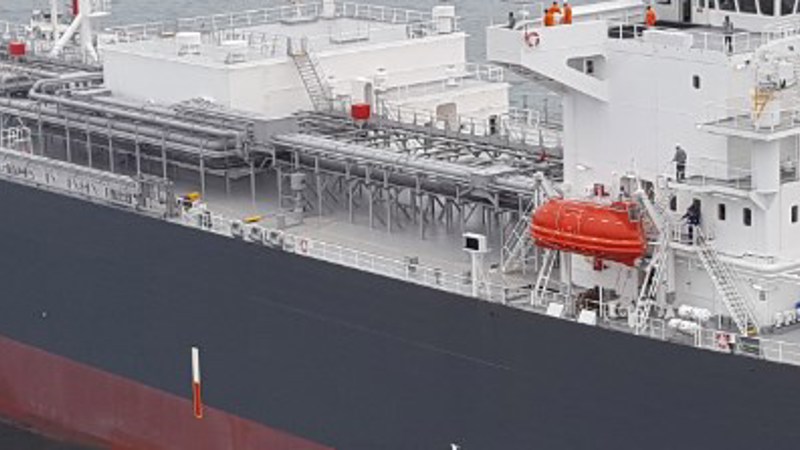LPG Vessel Management
We have a strong track record in the management of various types of LPG vessels.
LPG vessels managed by us are maintained to the highest standards by our in-house team of LPG experts, driven by the aim for greater operating efficiency and commercial success without compromising on safety and quality.
Various oil majors review our updated Tanker Management & Self-Assessment (TMSA). We strive to maintain excellence in our vessel performance SIRE inspections. As a progressive ship manager, we adopt the mindset to continuously improve our processes and systems to create a safe and efficient environment onboard that supports our crew.
Our LPG experts also provide value-added specialized services for:
- Safe and efficient loading of LPG in different scenarios
- Terminal vetting of newly launched and unfamiliar LPG terminals
- Preparation of vetting inspections by continuous engagement with ship staff and also by conducting pre-vetting sailing visits

LPG Vessel Types in Our LPG Vessel Management
With over 25 years of experience, our LPG management team takes pride in their expertise in overseeing a diverse fleet of LPG vessels. Here is a summary of the different types of LPG vessels that our management handles:
- Fully Pressurized Ships: These are the simplest and most common types of LPG vessels. They carry their cargo at ambient temperature in strong, spherical, or cylindrical pressure vessels made of high-grade steel. These tanks can withstand pressures of up to 17.5 kg/cm² and are typically designed to hold up to 5,000 to 6,000 cubic meters of LPG. Due to their smaller size and simpler design, they are often used for shorter journeys or for carrying smaller quantities of LPG.
- Semi-pressurised and Semi-refrigerated Ships: These vessels offer a balance between cost and efficiency. They use a combination of pressure and refrigeration to maintain the cargo at a lower temperature and pressure than fully pressurized ships. This allows them to carry larger volumes of LPG (5,000 to 20,000 cubic meters) and to travel longer distances. The tanks are typically cylindrical and insulated, and the ships have refrigeration or reliquefication plants on board to maintain the cargo's pressure.
- Fully Refrigerated Ships: These are the largest and most sophisticated type of LPG vessel. They use a high degree of refrigeration to keep the cargo at a very low temperature (around -50°C) and atmospheric pressure. This allows them to carry the largest volumes of LPG (up to 150,000 cubic meters) and to travel the longest distances. The tanks are typically prism-shaped and heavily insulated, and the ships have powerful refrigeration plants on board. These ships are often used for long-distance transportation of LPG between continents. (Source: https://www.marineinsight.com)
We are a member of:
![]()
We are a full member of the Society of International Gas Tanker and Terminal Operators Ltd. (SIGTTO), working together with the largest industry players to implement best practices across the gas shipping and terminal industries.

As part of The Society For Gas as a Marine Fuel (SGMF), we join forces with other members to encourage the safe and responsible operations of vessels using LNG as fuel and promote marine activities relating to the supply of LNG used for fuel.
FAQs regarding LPG Ship Management and LPG Carrier
What is LPG ship management?
LPG ship management is the complex process of overseeing everything from the daily operation and maintenance of these specialized ships to ensuring safe, efficient transportation of Liquefied Petroleum Gas. It encompasses technical expertise, crew management, cargo optimization, regulatory compliance, and navigating global logistics – all while prioritizing safety and minimizing environmental impact.
What are the benefits of outsourcing LPG ship management to a ship manager?
Here are the key benefits of outsourcing LPG ship management to a dedicated ship management company:
- Enhanced Expertise: Ship management companies boast teams of experienced LPG specialists, from nautical officers to engineers and cargo coordinators. This expertise goes beyond the day-to-day, covering compliance with complex regulations, optimizing cargo handling, and navigating technical challenges specific to LPG vessels.
- Streamlined Operations: Managing an LPG vessel involves a vast network of suppliers, ports, and regulatory bodies. Outsourcing allows a gas shipping company to tap into the company's established relationships and infrastructure, streamlining logistics, procurement, and communication, saving you time and resources.
- Reduced Costs: Building and maintaining a leading in-house LPG management team can be expensive. Outsourcing offers cost-effective access to a larger pool of skilled professionals, shared infrastructure, and economies of scale, leading to potentially significant cost savings in personnel, insurance, and technical maintenance.
- Improved Risk Management: Safety is paramount with LPG transport. Ship management companies have robust safety protocols, emergency response plans, and a deep understanding of navigating volatile environments. This ship manager helps mitigate risks, ensuring crew safety and minimizing potential environmental impact.
What is an LPG vessel?
According to Marine Insight, an LPG vessel, also known as a gas or LPG carrier, is a specialized ship designed for the safe and efficient transportation of Liquefied Petroleum Gas (LPG) or ammonia in bulk. LPG is a mixture of hydrocarbon gases derived from fossil fuel sources, produced during the petroleum (crude oil) refining process, primarily propane and butane, and is widely used for cooking, heating and as vehicle fuel. These vessels come in various sizes and designs, each suited for different purposes and voyage lengths.
What is the difference between LPG and LNG vessels?
The LPG and LNG ships are specialized gas carriers that transport liquefied hydrocarbon gases, but their characteristics and loading and unloading requirements are very different.
LPG carriers transport liquefied petroleum gas, which is a mixture of propane, butane, and other hydrocarbons. Liquefied petroleum gas liquefies at moderate pressure (about 8 bar) and does not require the extreme cold temperatures of LNG. Liquefied petroleum gas containers have cylindrical or spherical tanks that have high pressures. They come in a wider range of sizes, from smaller coastal vessels to larger ocean-going carriers.
LNG ships, on the other hand, are designed to transport liquefied natural gas (mainly methane) at extremely low temperatures (-162°C), with a volume reduction of 600 times. The ships feature large insulated cargo holds that resemble futuristic ocean cityscapes and are designed to transport large quantities of LNG, equivalent to the fuel tanks of 70,000 cars. The purpose of LNG ships is to realize long-distance transportation of LNG across oceans and deliver energy to areas far away from the production site. (Source: https://www.marineinsight.com)
What are the different sizes of LPG vessels?
According to Clarksons, LPG vessels come in various sizes, each suited for different purposes and journey lengths.
- Handy Gas Carriers: These LPG vessels have a capacity of 15,000 to 25,000 cubic meters (cbm). They are typically employed for short to medium-haul routes. Handy gas carriers can be semi-refrigerated, fully refrigerated, or pressurized ships.
- Mid-sizes: This category refers to fully refrigerated LPG ships with a capacity of 25,000 to 50,000 cbm. They are commonly used for intra-regional routes within the Americas or Asia, as well as medium-haul cross-trades in the North Sea and Europe.
- LGC: LGC stands for Large Gas Carriers, which encompass LPG vessels with a capacity of 50,000 to 70,000 cbm. These vessels are usually used to carry LPG between ports.
- Very Large Gas Carriers (VLGC): This category comprises LPG vessels with a capacity of 70,000 cbm and above. VLGCs are usually fully refrigerated and are employed on long-haul trade routes, particularly from the US and Middle East Gulf to Asia.
If you are interested in learning more about LPG vessel management, please contact us today. We would be happy to discuss your specific needs and look forward to partnering with you.